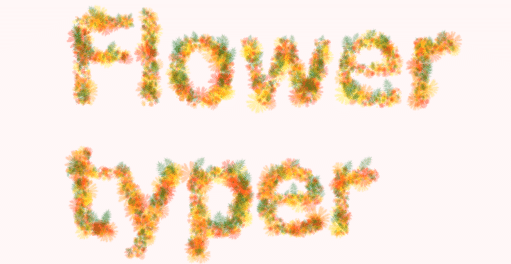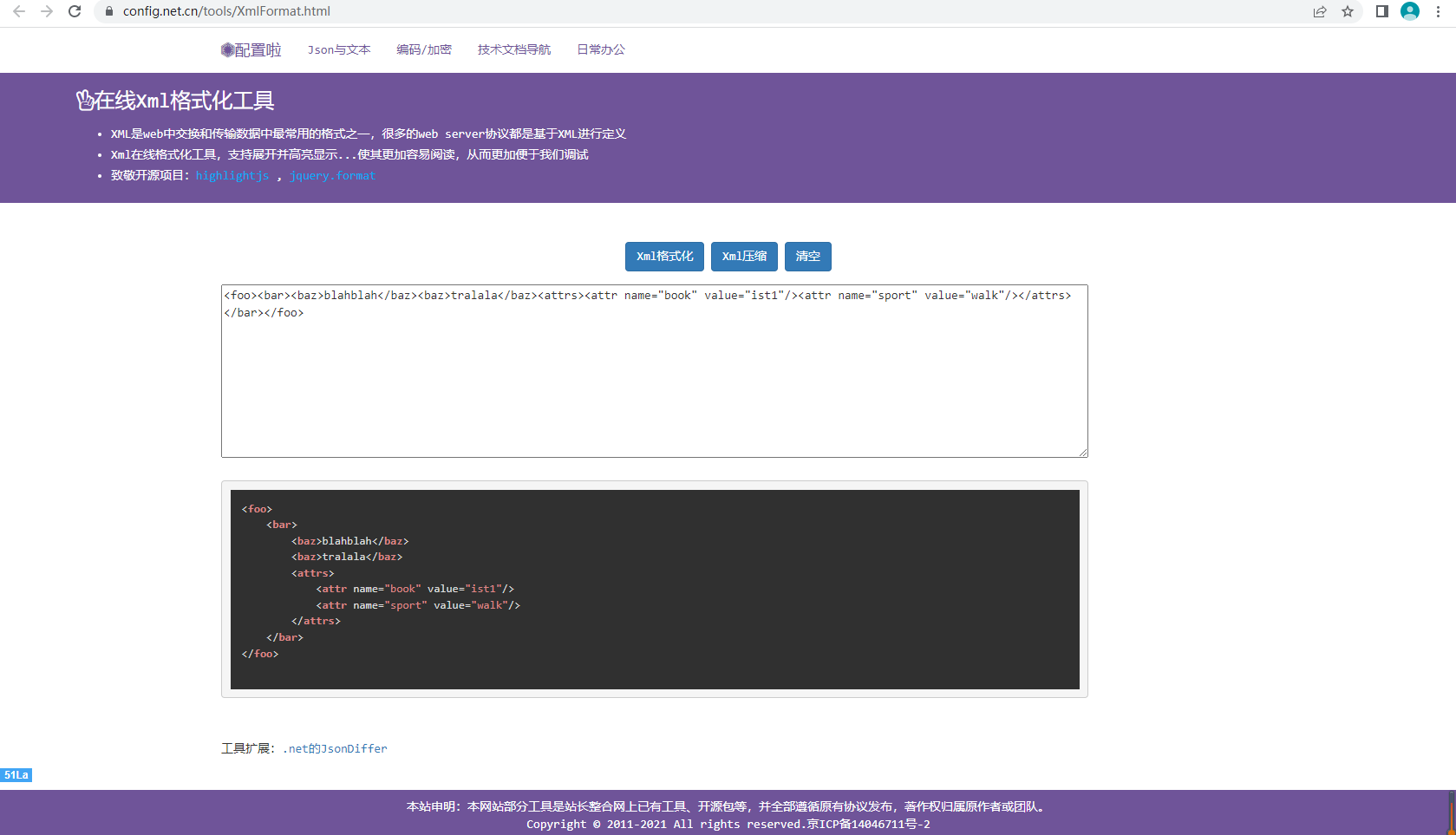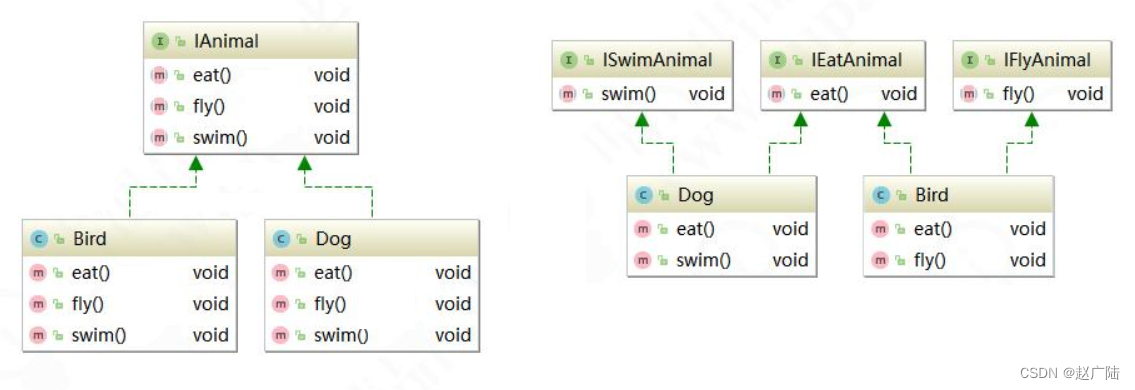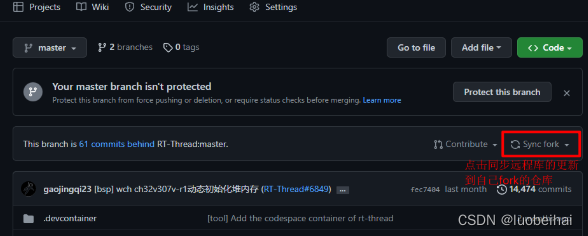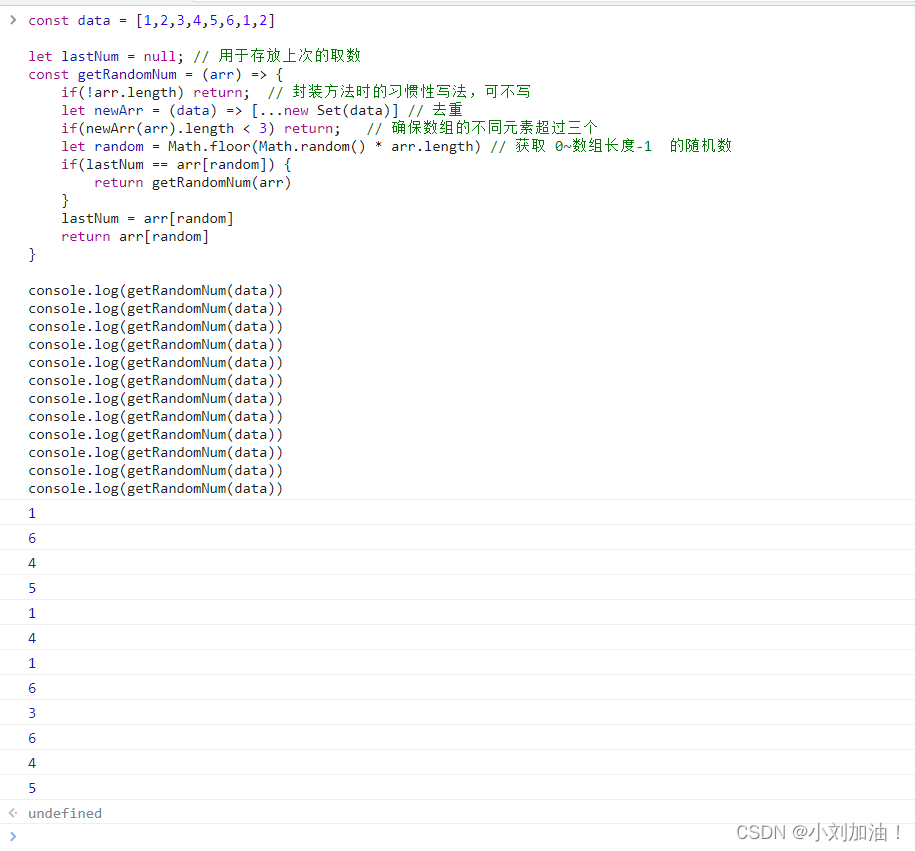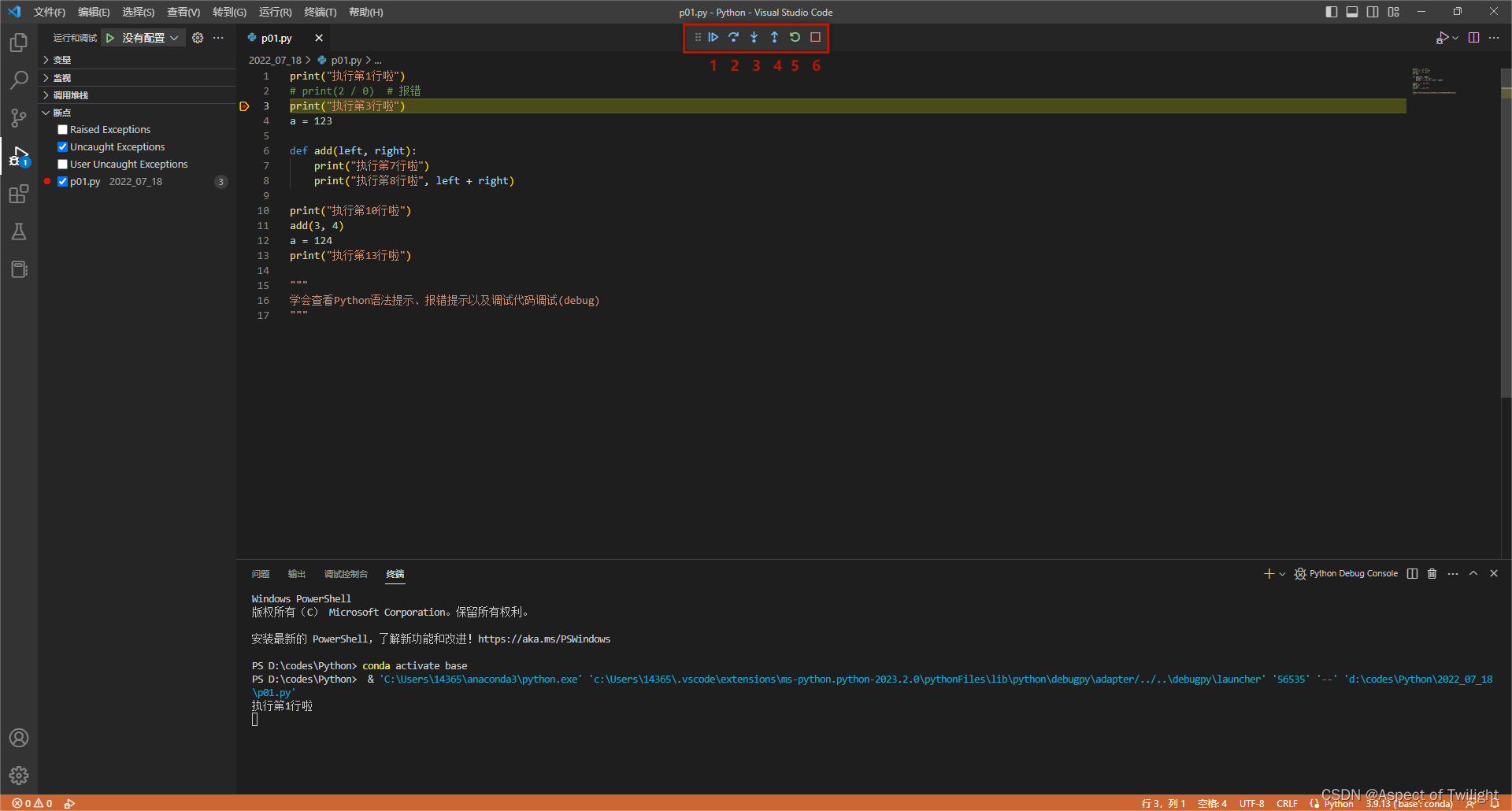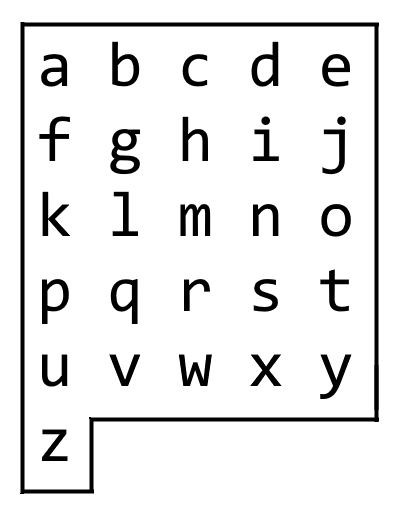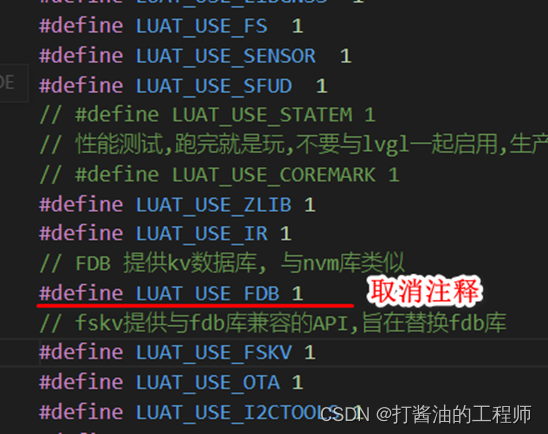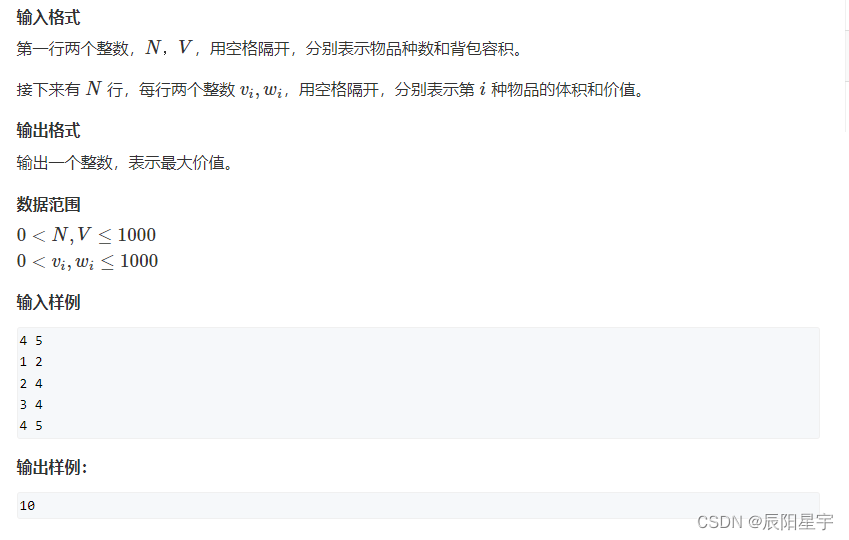目录
从尾到头打印链表_牛客题霸_牛客网
160. 相交链表
141. 环形链表
142. 环形链表 II
138. 复制带随机指针的链表
从尾到头打印链表_牛客题霸_牛客网
输入一个链表的头节点,按链表从尾到头的顺序返回每个节点的值(用数组返回)。
如输入{1,2,3}的链表如下图:
返回一个数组为[3,2,1]
0 <= 链表长度 <= 10000
【解法一】没学过c++时 反转计数+创建数组
* struct ListNode {
* int val;
* struct ListNode *next;
* };
*/
int* printListFromTailToHead(struct ListNode* listNode, int* returnSize ) {
// write code here
// 反转链表
if(NULL == listNode)
return NULL;
struct ListNode* cur = listNode;
struct ListNode* next = listNode;
struct ListNode* prev = NULL;
int count = 0;
while(cur)
{
count++;
next = cur->next;
cur->next = prev;
prev = cur;
cur = next;
}
// 计数存入数组
int *temp = (int *)malloc(sizeof(int)*count);
for(int i = 0; i < count; i++)
{
temp[i] = prev->val;
prev = prev->next;
}
*returnSize = count;
return temp;
}【解法二】 遍历一遍 放入vector进行反转
class Solution {
public:
vector<int> printListFromTailToHead(ListNode* head) {
vector<int> res;
if(head==nullptr)return res;
ListNode* cur = head;
while(cur)
{
res.push_back(cur->val);
cur = cur->next;
}
reverse(res.begin(), res.end());
return res;
}
};
【解法三】DFS
class Solution {
public:
vector<int> res;
void DFS(ListNode* cur)
{
if(cur)
{
DFS(cur->next);
res.push_back(cur->val);
}
}
vector<int> printListFromTailToHead(ListNode* head) {
DFS(head);
return res;
}
};
【解法四】一次遍历入栈,之后把元素出栈入数组
class Solution {
public:
vector<int> printListFromTailToHead(ListNode* head) {
vector<int> res;
stack<int> s;
while(head)
{
s.push(head->val);
head=head->next;
}
while(!s.empty())
{
res.push_back(s.top());
s.pop();
}
return res;
}
};
160. 相交链表
给你两个单链表的头节点 headA 和 headB ,请你找出并返回两个单链表相交的起始节点。如果两个链表不存在相交节点,返回 null 。
图示两个链表在节点 c1 开始相交:
题目数据 保证 整个链式结构中不存在环。
注意,函数返回结果后,链表必须 保持其原始结构 。
自定义评测:
评测系统 的输入如下(你设计的程序 不适用 此输入):
intersectVal - 相交的起始节点的值。如果不存在相交节点,这一值为 0
listA - 第一个链表
listB - 第二个链表
skipA - 在 listA 中(从头节点开始)跳到交叉节点的节点数
skipB - 在 listB 中(从头节点开始)跳到交叉节点的节点数评测系统将根据这些输入创建链式数据结构,并将两个头节点 headA 和 headB 传递给你的程序。如果程序能够正确返回相交节点,那么你的解决方案将被 视作正确答案 。
来源:力扣(LeetCode)
链接:https://leetcode.cn/problems/intersection-of-two-linked-lists
著作权归领扣网络所有。商业转载请联系官方授权,非商业转载请注明出处。class Solution { public: ListNode *getIntersectionNode(ListNode *headA, ListNode *headB) { if(headA==nullptr || headB==nullptr)return nullptr; ListNode *l1 = headA, *l2 = headB; while(l1 != l2) { l1 = l1==nullptr ? headB : l1->next; l2 = l2==nullptr ? headA : l2->next; } return l1; } };
141. 环形链表
给你一个链表的头节点 head ,判断链表中是否有环。
如果链表中有某个节点,可以通过连续跟踪 next 指针再次到达,则链表中存在环。 为了表示给定链表中的环,评测系统内部使用整数 pos 来表示链表尾连接到链表中的位置(索引从 0 开始)。注意:pos 不作为参数进行传递 。仅仅是为了标识链表的实际情况。
如果链表中存在环 ,则返回 true 。 否则,返回 false 。
示例 1:
输入:head = [3,2,0,-4], pos = 1
输出:true
解释:链表中有一个环,其尾部连接到第二个节点。class Solution { public: bool hasCycle(ListNode *head) { //if(head==nullptr || head->next==nullptr)return false; ListNode* fast = head; ListNode* slow = head; while(fast!=nullptr && fast->next!=nullptr) { fast = fast->next->next; slow = slow->next; if(fast == slow) // 如果快慢指针相遇 则有环 return true; } return false; } };
142. 环形链表 II
给定一个链表的头节点 head ,返回链表开始入环的第一个节点。 如果链表无环,则返回 null。
如果链表中有某个节点,可以通过连续跟踪 next 指针再次到达,则链表中存在环。 为了表示给定链表中的环,评测系统内部使用整数 pos 来表示链表尾连接到链表中的位置(索引从 0 开始)。如果 pos 是 -1,则在该链表中没有环。注意:pos 不作为参数进行传递,仅仅是为了标识链表的实际情况。
不允许修改 链表。
示例 1:
输入:head = [3,2,0,-4], pos = 1
输出:返回索引为 1 的链表节点
解释:链表中有一个环,其尾部连接到第二个节点。class Solution { public: ListNode *detectCycle(ListNode *head) { ListNode *fast = head; ListNode *slow = head; bool flag = 0; while(fast!=nullptr && fast->next!=nullptr) { fast = fast->next->next; slow = slow->next; if(slow == fast) { flag = 1; // 找到第一个相遇结点 break; } } if(flag==0) return nullptr; ListNode *cur = head; // 从head开始一起往后走 while(cur != fast) { cur = cur->next; //再次相遇即为入环口 fast = fast->next; } return cur; } };
138. 复制带随机指针的链表
给你一个长度为 n 的链表,每个节点包含一个额外增加的随机指针 random ,该指针可以指向链表中的任何节点或空节点。
构造这个链表的 深拷贝。 深拷贝应该正好由 n 个 全新 节点组成,其中每个新节点的值都设为其对应的原节点的值。新节点的 next 指针和 random 指针也都应指向复制链表中的新节点,并使原链表和复制链表中的这些指针能够表示相同的链表状态。复制链表中的指针都不应指向原链表中的节点 。
例如,如果原链表中有 X 和 Y 两个节点,其中 X.random --> Y 。那么在复制链表中对应的两个节点 x 和 y ,同样有 x.random --> y 。
返回复制链表的头节点。
用一个由 n 个节点组成的链表来表示输入/输出中的链表。每个节点用一个 [val, random_index] 表示:
val:一个表示 Node.val 的整数。
random_index:随机指针指向的节点索引(范围从 0 到 n-1);如果不指向任何节点,则为 null 。你的代码 只 接受原链表的头节点 head 作为传入参数。
示例 1:
【解法一】使用哈希表来存储旧结点与新结点之间的对印关系
class Solution {
public:
Node* copyRandomList(Node* head) {
if(head == nullptr) return nullptr;
Node* newhead = new Node(0);
newhead->next = nullptr;
Node* cur = head, *pre = newhead;
map<Node*, Node*> mp;
while(cur)
{
Node* node = new Node(cur->val);
pre->next = node;
mp[cur] = node;
cur = cur->next;
pre = pre->next;
}
for(auto &node : mp)
{
if(node.first->random == nullptr)
node.second->random = nullptr;
else
node.second->random = mp[node.first->random];
}
return newhead->next;
}
};【解法二】
/*
// Definition for a Node.
class Node {
public:
int val;
Node* next;
Node* random;
Node(int _val) {
val = _val;
next = NULL;
random = NULL;
}
};
*/
class Solution {
public:
Node* copyRandomList(Node* head) {
if(head == nullptr) return nullptr;
Node* cur = head;
while(cur)
{
Node* node = new Node(cur->val);
node->next = cur->next;
cur->next = node;
cur = node->next;
}
for(cur = head; cur != nullptr; cur=cur->next->next)
{
if(cur->random == nullptr)
cur->next->random = nullptr;
else
cur->next->random = cur->random->next;
}
cur = head->next;
Node *pre = head, *newhead = head->next;
while(cur->next)
{
pre->next = pre->next->next;
cur->next = cur->next->next;
pre = pre->next;
cur = cur->next;
}
pre->next = nullptr;
return newhead;
}
}; 


